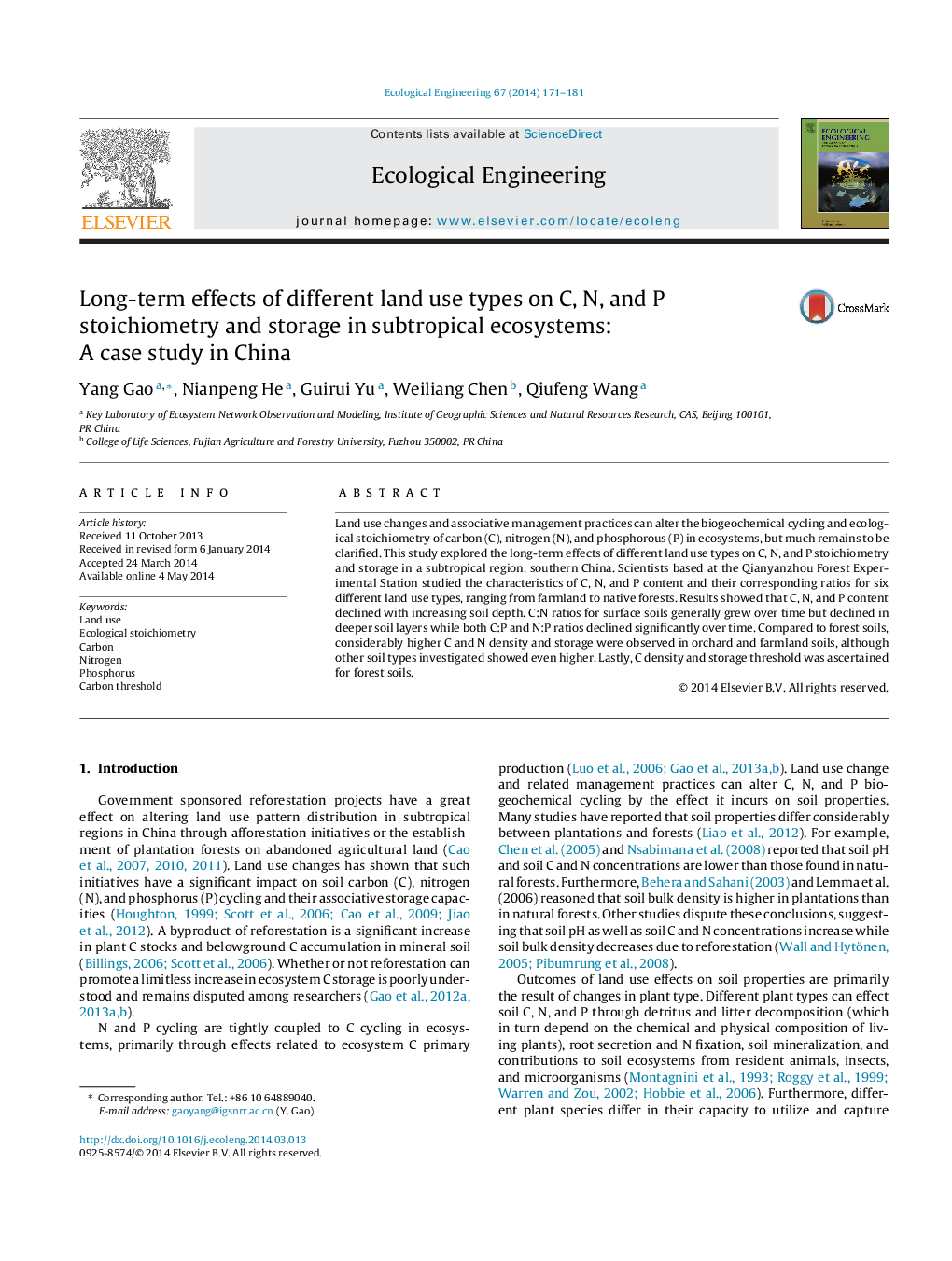| Article ID | Journal | Published Year | Pages | File Type |
|---|---|---|---|---|
| 4389428 | Ecological Engineering | 2014 | 11 Pages |
Abstract
Land use changes and associative management practices can alter the biogeochemical cycling and ecological stoichiometry of carbon (C), nitrogen (N), and phosphorous (P) in ecosystems, but much remains to be clarified. This study explored the long-term effects of different land use types on C, N, and P stoichiometry and storage in a subtropical region, southern China. Scientists based at the Qianyanzhou Forest Experimental Station studied the characteristics of C, N, and P content and their corresponding ratios for six different land use types, ranging from farmland to native forests. Results showed that C, N, and P content declined with increasing soil depth. C:N ratios for surface soils generally grew over time but declined in deeper soil layers while both C:P and N:P ratios declined significantly over time. Compared to forest soils, considerably higher C and N density and storage were observed in orchard and farmland soils, although other soil types investigated showed even higher. Lastly, C density and storage threshold was ascertained for forest soils.
Related Topics
Life Sciences
Agricultural and Biological Sciences
Ecology, Evolution, Behavior and Systematics
Authors
Yang Gao, Nianpeng He, Guirui Yu, Weiliang Chen, Qiufeng Wang,
